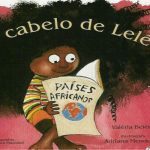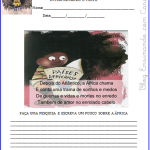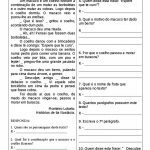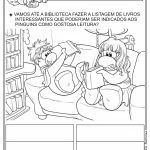
It is an activity that will stimulate, strengthen or even make your child or student take a liking to reading.
The first step is to talk to the child and discover their literary taste. Literary taste here means knowing what kind of story she likes best.
Once that's done, provoke her to read. This is done in the following way: First, read yourself a book, on the subject she likes. Let her see you reading. If you do this subtly, it will be even better. Don't try to draw attention to the fact that you are reading, especially if you are not in the habit of reading regularly, as she may notice the trick and spoil the tactic.
If the adult is the type who likes to read and she already knows this, then she can act naturally. As you read the book, try to demonstrate the emotions you feel from what you are reading. That is, laugh, make comments softly as if you were talking to yourself etc. This will make her very curious.
Realizing that you like the same thing she does, her self-confidence, will receive a huge boost of spirit. Just imagine, an adult who likes what I do – she will think – and without anyone asking him to do it!
When you've finished reading, don't offer him the booklet. Instead, put it in a visible place, talk to her about other topics, and finally about stories on the topic she prefers; then comment on what you just read. As this is done in parts, haste can spoil everything. So, on another occasion, tell her that you bought a book for her to see, and that it is very good.
Important: Do not force it to read at any time. Give him the booklet and that's it. It may be that on first contact, she'll just flip through the pages to explore the terrain she's stepping on.
Here is a break for some important observations, which will determine the success or failure of your plan. You see, it is not that “it can determine”, it is that “it will determine”.
Every child, with rare exceptions, likes booklets with:
Well done drawings. It has to be drawings or illustrations; they find photographs too depressing and sober for their world, it may even be an escape from reality, but that's how it is, and right now there's no point in understanding why. Just know which photos are less interesting to them than illustrations.
The drawings or illustrations should clearly reflect what is in the text she is reading, so she can associate it with the visual idea of the situation, as she is still unable to do this alone, and is still building word associations with images.
Sheets with little text.
Clear text, preferably with words she already knows (this is not mandatory).
book with few pages; average of 20.
So, the time has come for you to act. In possession of the book, after having leafed through it, then use the magic argument.
ASK HER TO READ HER BOOK FOR YOU!
When asking for this, demonstrate that you have complete confidence in her (this is achieved with the right intonation of the voice, firm tone, normal, as if it were the most natural thing in the world, without hesitation). Also say that you are interested in the book. At this point, any common insecurity in children, when offering or sharing something with adults, tends to disappear.
While reading, you can interrupt to make a comment regarding the story if you like. Also, before starting, tell him that if he has any doubts about the meaning of the words, to ask; or rather, use your common sense and make complementary comments without her asking, at least about those that you think are more appropriate, and even as a way to enrich the text. It is important for you to know that she will only ask if she trusts you, or if you have given her explicit permission to do so. It's done then, she's ready and no more inhibitions.
Finally, be patient and never correct it, just say you didn't get it right, a paragraph, etc. In this case, you can ask her to comment what she understood… It may be that during the reading she lowers her voice a little, which is normal. Ask, without ordering, with great humor and kindness, that she speaks a little louder. This will only mean to her that you are actually interested in reading, and her motivation will increase even more.
When you notice that she is tired, ask her to take a break. Symptoms of tiredness are: constant change in position, subtle glances to the side, trying to lie down on the floor, etc.
Finally, share with her the story that was read. It is likely that she did not understand the story well, as only older children can read to others and pay attention to what they are reading. Tell her that the story was really good, that you liked it, and suggest that she read it when she feels like it.
Even if she doesn't accept it right away, which is more likely, leave the book in a visible and accessible place, and encourage her at other times to read it, without forcing or demanding. Do this in a commentary tone.
It is important for you to know that by asking her to read you have given her confidence; entrusted her with a grown-up task, and liked what she did; it made her feel important. Best of all, that's the impression she'll get of you from then on.
The beneficial effects of this on her personality are definite. Thus, the seed of the reading habit was planted in a simple, natural way, without the pressures of obligation, in an atmosphere of harmony, as everything that is true should be.
One last warning: Ask them to read it to you again and again. Give her more books, value and encourage her suggestion; accompany her when buying or choosing a book. Use your creativity to use this same approach in the classroom!
Author: Alberto Filho
Did you like it? Share this post on your social network
 I BOOK LELE'S HAIR TO PRINT
I BOOK LELE'S HAIR TO PRINT
 Activities About the Book: Lele's Hair
Activities About the Book: Lele's Hair
 READY TO PRINT LITERARY FORM
READY TO PRINT LITERARY FORM
 READING ACTIVITIES WITH TEXTS AND QUESTIONS
READING ACTIVITIES WITH TEXTS AND QUESTIONS
 READY CLASS PLAN OF THE BOOK “MARIA-VAI-COM-AS-OTHERS”
READY CLASS PLAN OF THE BOOK “MARIA-VAI-COM-AS-OTHERS”
 Suggested Activities for Working at the Library
Suggested Activities for Working at the Library
This site uses Akismet to reduce spam. Learn how your comment data is processed.


